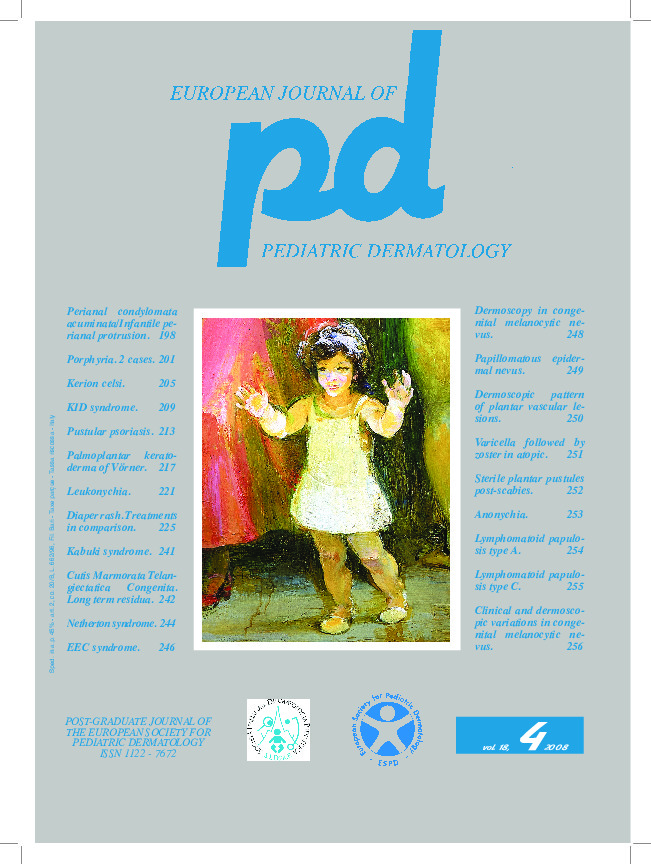A case of kerion celsi with an important ide reaction.
Downloads
How to Cite
Di Landro A., Marchesi L., Pesenti A., Grossi A., Costa G. 2008. A case of kerion celsi with an important ide reaction. Eur. J. Pediat. Dermatol. 18 (4):205 -8.
pp. 205 - 208
Abstract
Tinea capitis affects the child in the prepubertal age. Hot and humid climates together with poor social economic living conditions foster its spreading especially in tropical areas. Its clinical features are various and depend on the modalities of hair invasion, the resistance level of the host and the degree of the inflammatory reaction. When the latter is important, kerion celsi develops. Its prognosis is severe, also because of possible scarring alopecia. The etiology of scalp ringworm changed in the last decades. Although dermatophytes of animal origin, particularly Microsporum canis, are the main etiologic agent, nonetheless anthropophilic dermatophytes are increasingly important in the larger urban areas of some countries, where the ratio of immigrants is higher. The clinical features associated to the latter group of people are more deceitful than the former ones and are due to contagion among the human beings. We describe the case of a Moroccan child with a kerion celsi due to an anthropophilic dermatophyte (Trichophiton tonsurans) with an important ide reaction.Keywords
Kerion celsi, Ide reaction, Trichophyton tonsurans

